You wouldn’t think that a bunch of buttons and a few pieces of felt could teach so many math skills! But it can. This button invitation to play was inspired by The Button Box picture book.
Then keep reading for 10+ invitation to play ideas.
Invitation to Play Ideas for Preschoolers and Toddlers
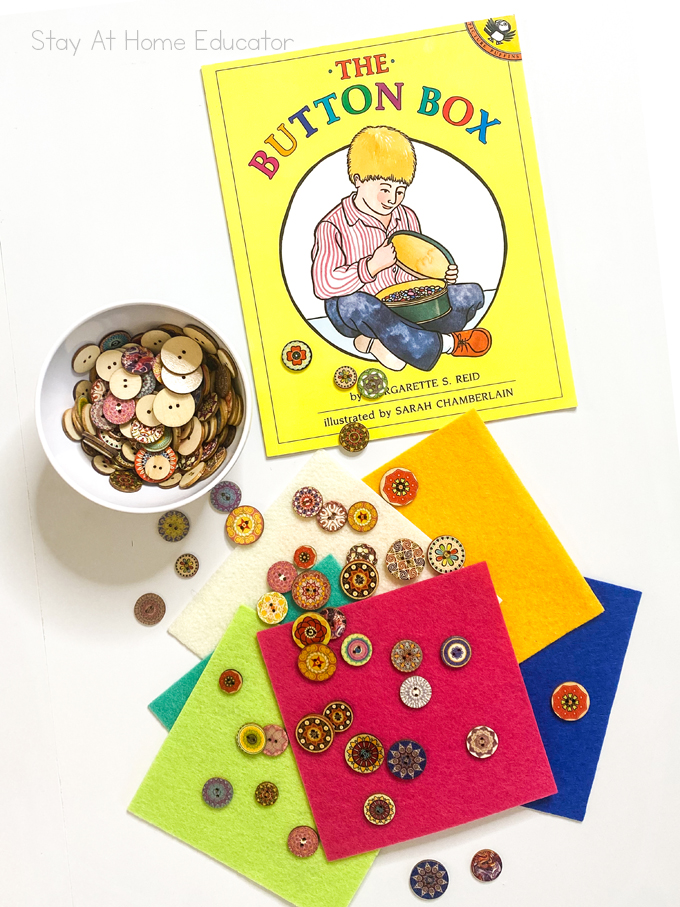
Play is a powerful resource in teaching preschool, and should be included as part of any well-rounded preschool curriculum. Even advanced academic based preschool curriculum should include play and hands on activities.
-
Product on sale
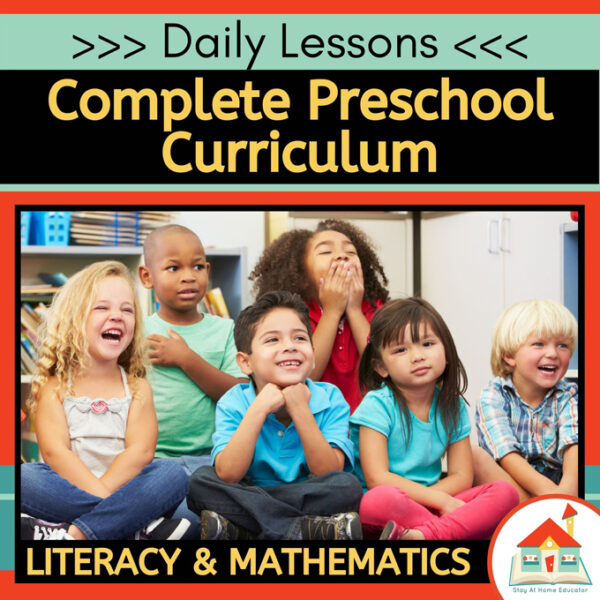 * Daily Lessons in Preschool Literacy & Math CurriculumOriginal price was: $270.00.$121.50Current price is: $121.50.
* Daily Lessons in Preschool Literacy & Math CurriculumOriginal price was: $270.00.$121.50Current price is: $121.50.
FAQ About Invitations to Play
An invitation to play is a way of setting up materials or toys for a play session and inviting your preschooler to manipulate and play with the items as desired. Children are allowed to play with the provided materials in the way they see fit, which might not be conventional.
There should be no rules in an invitation to play, with the exception of being kind, respectful, and safe.
An invitation to play should be open-ended, which means that they should not be designed for a specific outcome. Set up an invitation to play by taking the following steps:
1. Select a well-lit, comfortable space for the invitation to play.
2. Select a range of items, manipulatives, or loose parts.
3. Arrange them in a pleasing manner.
4. Invite your preschooler to come and play.
There are no rules with what an invitation to play should look or feel like, so there is a wide range of what kind of invitation to play that can be presented. Playdough invitations to play are always popular, as well as small water bins, and activities using natural or recycled materials.
Related Reading
Inspired by The Button Box – an Invitation to Play
The Button Box is one of mr favorite picture books to introduce children to sorting concepts. After thoroughly reading the book, I offered my preschoolers this button invitation to play, which turned out to be an awesome counting activity for preschoolers, too.
Materials for The Button Box Inspired Invitation to Play
The materials for this invitation to play are basic, making it practically no-prep.
- buttons of various sizes, shapes, colors and materials
- felt pieces in rainbow colors
- the book, The Button Box
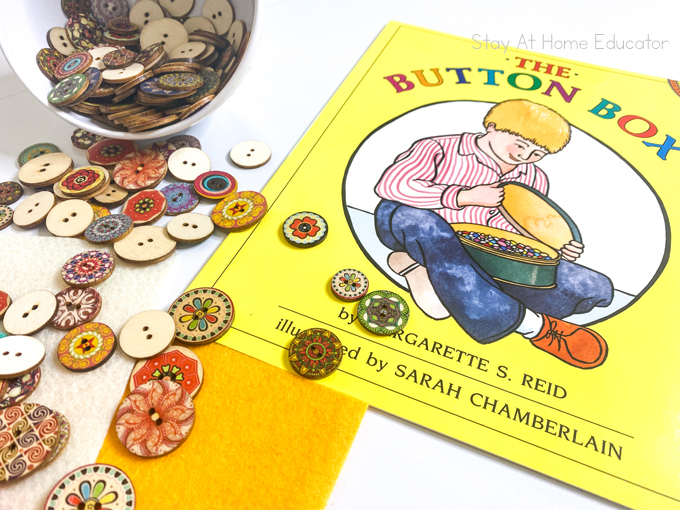
Here’s Why This Works
We started by reading The Button Box together, taking time to look at the pictures as talk about them. The book is a fantastic introduction to sorting activities for preschoolers.
My preschoolers loved this invitation to play for several reasons.
- It’s colorful.
- It’s full of various sized buttons, some of which are “teeny tiny,” and my own preschool aged son adores all things that are teeny tiny.
- The buttons make the most delightful sounds when dropped.
The Set Up
Place the buttons in a few small bowls. I love these melamine bowls. Set out the felt pieces, one in each color of the rainbow.
Now, invite your preschoolers to join you in some fun!
What to Expect in an Invitation to Play
Remember, preschoolers may use the materials in unconventional ways. As the facilitator in the preschool, you should expect children to do one of two things at the beginning:
- Be confused and not know what to do when you say “play”.
- Dive right in and start exploring.
I have to mention this because often times, if preschoolers are new to invitations to play, they are not sure what to do. You may say to start playing and they might say, “with what?” or “how?”
The best way to combat this is to sit down and engage with the materials yourself, thinking aloud as you do. This is a critical piece in the Reggio philosophy in which invitations to play are based.
Other preschoolers do not hesitate at all.
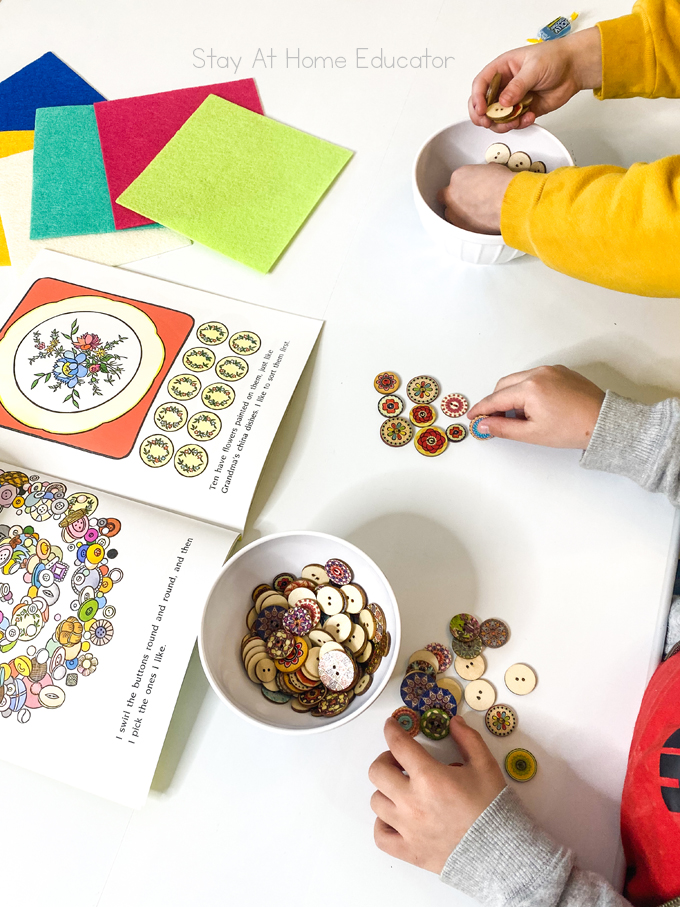
The preschoolers flipped through the picture book as they sorted through their bowl of buttons.
They talked as they pulled the buttons out.
This one is blue!
Purple is my favorite color.
Look, it’s a wheel!
They sound like rain!
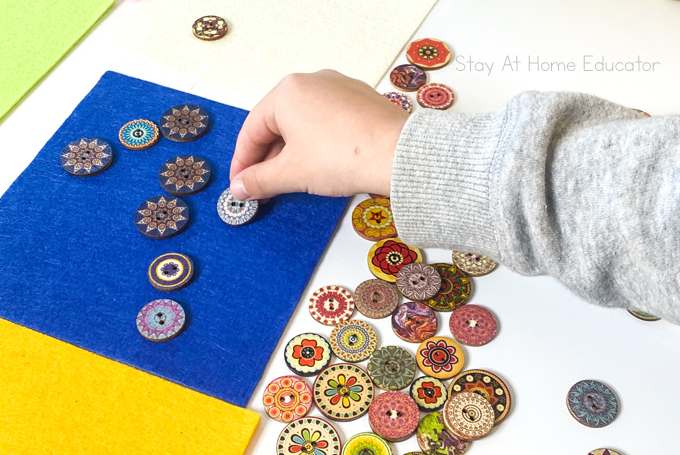
We laid out the felt pieces, one in each color and my preschoolers immediately started sorting the buttons.
This was really interesting because since the buttons had such detailed patterns on them, the preschoolers had a wide range of reasons why they thought a certain button belonged on a specific felt piece.
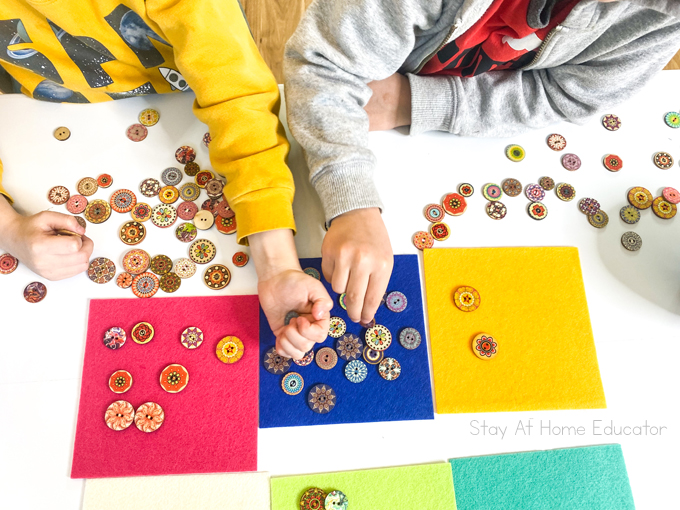
The preschooler did not always agree as to where each button went. This was a good opportunity for me to use gentle discipline and help them work through their differences.
And it was also the perfect opportunity to teach my preschoolers more about sorting skills.
Invitations to Play Ideas for Toddlers
Open ended play is also important for toddlers. In fact, it’s a critical type of play in early childhood education. Activities like this encourages children to learn to compare and sort, about colors and shapes, and help develop fine motor skills.
Change this into an invitation to play for toddlers by using buttons with a diameter of two inches or more.
These buttons are jumbo sized, and perfect for this.
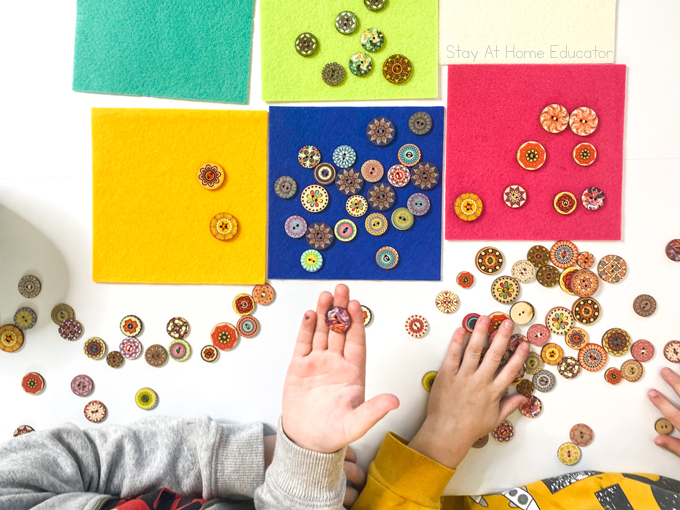
More Learning Activities Featuring Invitations to Play
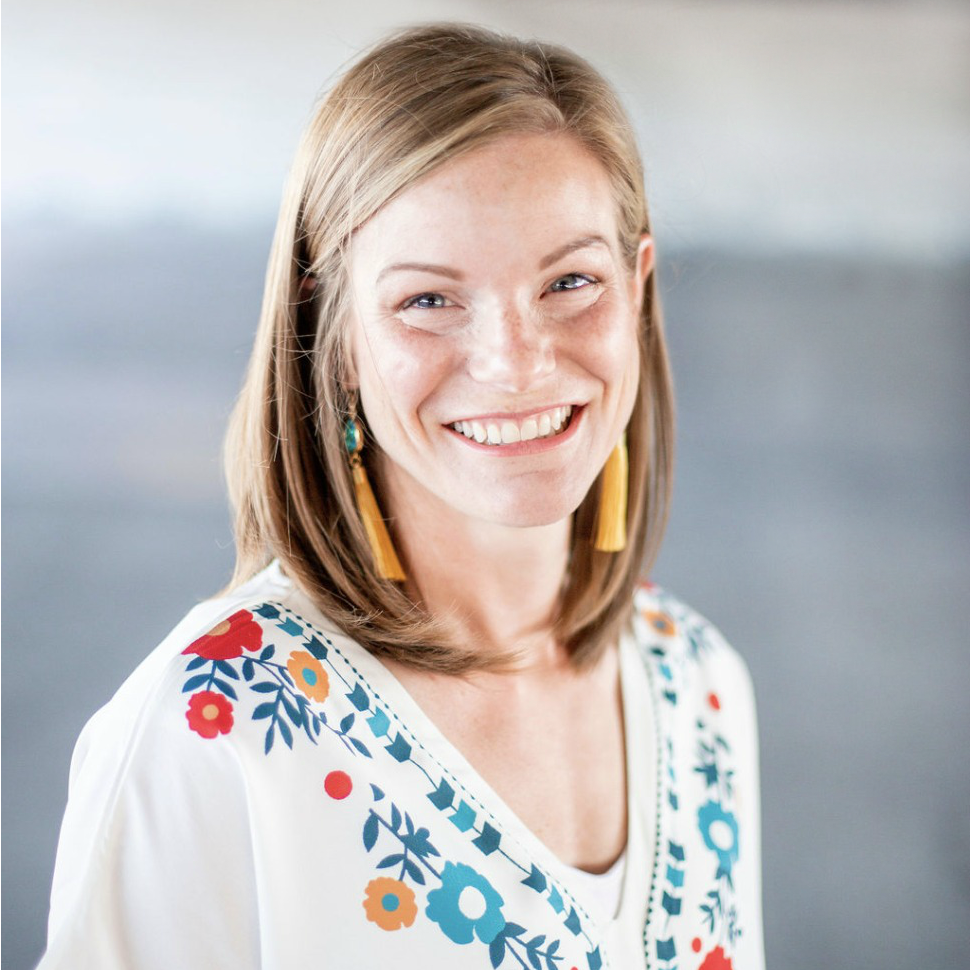
I’m Sarah, an educator turned stay-at-home-mama of five! I’m the owner and creator of Stay At Home Educator, a website about intentional teaching and purposeful learning in the early childhood years. I’ve taught a range of levels, from preschool to college and a little bit of everything in between. Right now my focus is teaching my children and running a preschool from my home. Credentials include: Bachelors in Art, Masters in Curriculum and Instruction.
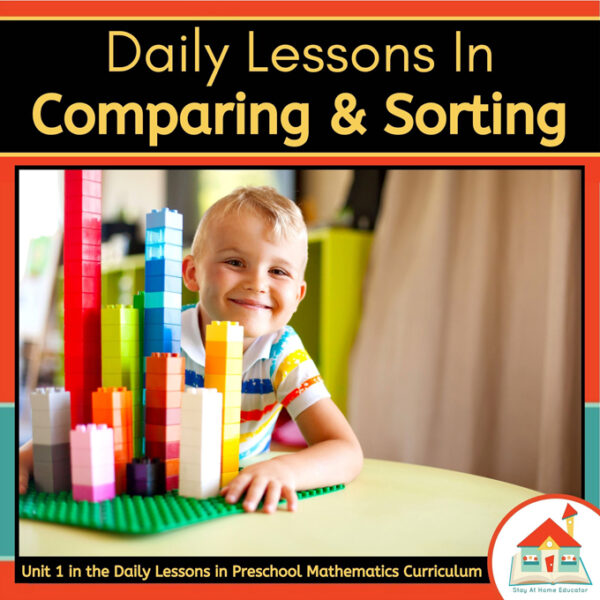
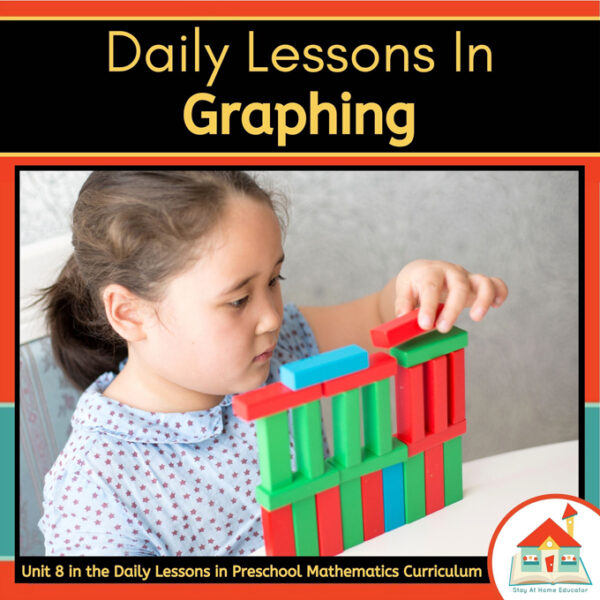
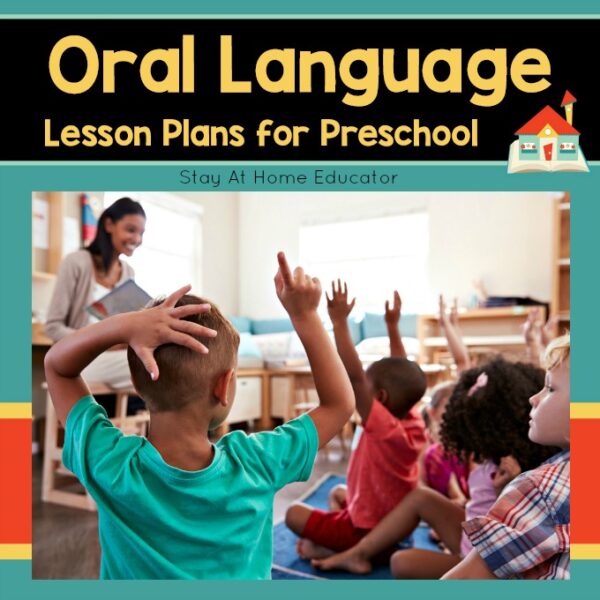
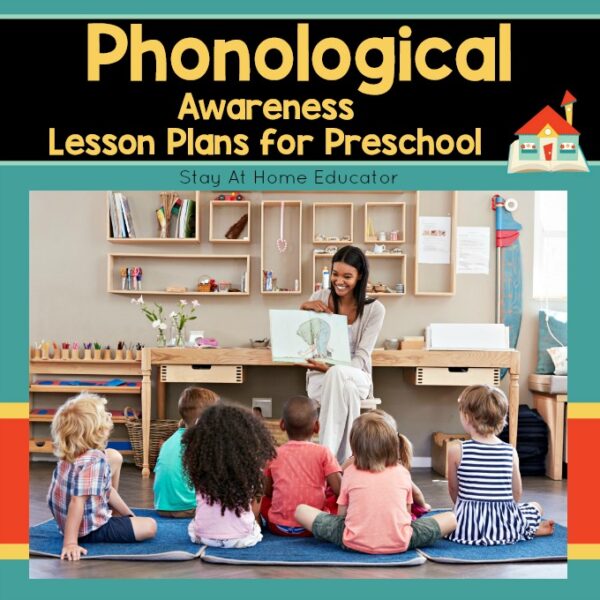

love the play with buttons, so colorful and engaging!